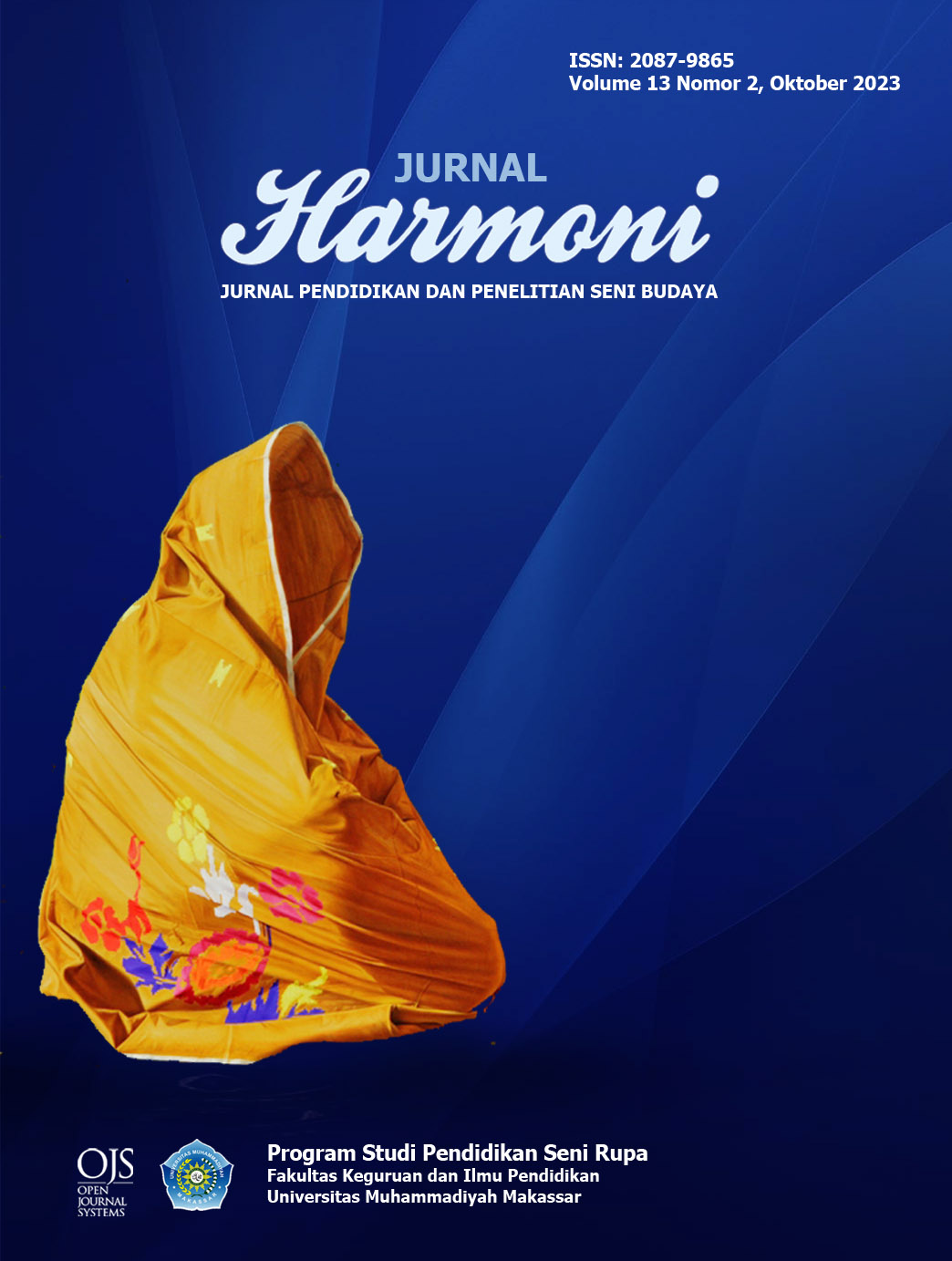KREATIVITAS SENI MEMBATIK MENGGUNAKAN MOTIF BAWA PADA JURUSAN KRIYA KREATIF BATIK DAN TEKSTIL DI SMKN 3 KOTA BIMA
DOI:
https://doi.org/10.26618/jh.v13i2.12890Keywords:
Creativity, batik, motif BawaAbstract
Indonesia is a nation rich in cultural and artistic treasures, consisting of several islands, tribes that are very famous around the world by having a diversity of culture and artistic creativity, namely traditional clothes and fabrics typical of their respective regions, one of which is batik. The type of research that will be used is a type of research that is qualitative descriptive "This research aims to find out the process of creativity of the art of batik using the motif of bringing in students of class XII of the Department of Textiles Smkn 3 Bima and knowing the quality of the results of the work. The results of research on student batik works are relatively very good, from their own motives using local motifs that can attract the attention of the local community, because onions are the largest income of milky milk farmers. And the discussion about the process of student creativity using bawa motifs combined with uma lengge motifs or bima traditional houses in one cloth with batik writing techniques. The conclusion that the process of working on the art of batik using the motive of carrying out is to carry out learning activities, where students are required to have creative ideas and follow the stages that support the success of the work. The advice is for a new generation of batik makers, presumably make batik works as a reference and have creative ideas, cultural insights and traditions in batik work.References
Ahyari, Agus. (2002). Manajemen Produksi.Yogyakarta: Perencanaan Sistem Produksi.BPFE.
Apriliawan, Dody, Tarno. Yasin., & Hasbi. (2013). Permodelan Laju Inflasi Di Provinsi Jawa Tengah Menggunakan Regresi Data Panel. Jurnal Gaussian, Volume 2, Nomor 4, Tahun 2013, Halaman 301-321.
Aryunda. (1996). Batik Indonesia. Jakarta: PT Golden Terayon Press.
Ashari Meisar. (2016). Kritik seni: Sarana Apresiasi dalam Wahana. Makassar: Mediaqita Foundation.
Riyanto Bambang. (1997). Dasar-dasar Pembelanjaan Perusahaan, Edisi 4.Yogyakarta: BPFE.
Beardsley., & Monroe C. (1958). 1st. ed.Aesthetics: Problems in the Philosophy of Criticism, Disitasi: 7 Desember 2010. http://www.google.com/books.
BPPKP. (2015). Potensi Bawang Merah Di Kabupaten Bima. Jakarta: Ministry Of Trade.
Budiyono, dkk. Kriya Tekstil. Jakarta: Direktorat Pembinaan Sekolah Menengah Kejuruan.
Daryanto. (1992). Teknik pembuatan batik dan sablon. Semarang: Cv. Aneka Ilmu.
Faisal, M. (2015). Antropologi Seni. FKIP: Unismuh Makassar.
Faisal, M. (2011). Desain Dasar Dwi Matra. FKIP Universitas Muhammadiyah Makassar
Giri., & Edin Suhaedin Purnama. (2004). Ragam Hias Kreasi. Yogyakarta: Program Studi Pendidikan Seni Kerajinan.
Goenadi., & Dodi. (2013). Batik Indonesia. Bandung: Cv. Teman Belajar.
H.B. Sutopo. (2002). Metodologi Penelitian Kualitatif. Surakarta : UNS Press.
Hurlock E.B. (1999). Psikologi Perkembangan Suatu Pendekatan Sepanjang Rentang Kehidupan Alih bahasa: Istiwidayati & Soedjarwo. Edisi Kelima. Jakarta: Erlangga.
Kusrianto., & Adi. (2013). Batik – Filosofi, Motif Dan Kegunaan (ed.1). Yogyakarta: Andi.
Lisbijanto., & Herry. (2013). Batik. Yogyakarta: Graha Ilmu.
Munandar S. C. Utami. (1985). Mengembangkan Bakat Dan Kreativitas Anak Sekolah. Jakarta: Gramedia..
Moleong L.J. (2011). Metodologi Penelitian Kualitatif Edisi Revisi. Bandung: PT. Remaja Rosdakarya.
Pamadhi., & Hajar. (2012). Pendidikan Seni. Yogyakarta: UNY Press.
Pena., & Tim Prima. (2006). Kamus Ilmiah Populer. Surabaya : Gitamedia Press.
Priansa., & Donni Juni. (2017). Pengembangan Strategi Dan Model Pembelajaran. Bandung: Cv. Pustaka Setia.
SH, Muslimah. Faisal, M. MM, Lugis. (2023). Komparasi Estetik Seni Graffiti Karya Aliastiga. Jurnal Harmoni 13 (1), 1-8.

